Tip and Tricks of the trade

Some tips on getting the best quality whip for your money.
1. The handle should be made of something that will not "RUST" as all leather will absorb moisture
over time. Using something that will rust may cause the handle to fail.
Some will use a steel spike or thereof, this has no give and will soon show!
2. Shot loading is all about optimization not over loading and making the whip to heavy for cracking.
If you are going to be learning or working-out hard, a heavy whip is like 40 kgs extra around the
waist in a marathon!
3. Steel shot again is a problem! Rust! Leather likes to absorb moisture, it won't show until it is to late.
4. Lots of fancy braiding! I also put fancy stuff on my whips but it can cause problems with the flow of a
whip if it is just another fancy bit added on! All is fare in art and war!
5. Do you need 72 braid? When it comes to hard work a 72 or (thereof) is kind of like 100 pound weakling.
These high braids are great for the art of, but sometimes the cheaper lower braids last the longest.
6. It's all about fun!!!! This is a good point, not a do I get my bang for my buck. A good or well made
whip will (in some cases) out last the buyer. But it really depends on how you use or abuse it.
7. For stock whip handles a paper wrap would be fine if the whip stays dry all the times but even
the most looked after whip can get wet and that's when the trouble starts. I have repaired far to many whips
that paper is used on the inside of handles and it has slipped and the keeper has pulled away.
From The Whip Man, have a "Whip crack'n good time!".
1. Tying on a cracker
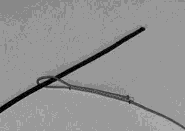
Thread the whip's rat-tail/fall through the loop of the cracker.
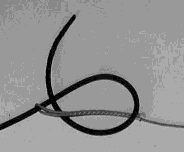
Loop the rat-tail/fall as shown.
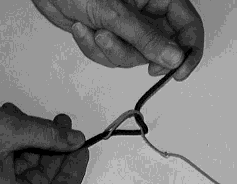
Pull the rat-tail/fall to straighten.
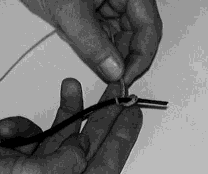
Move the cracker into position near the end of the rat-tail/fall and pull to tighten.

The tied cracker should look like this.
Note: If the cracker slips off, rub the rat-tail/fall with methylated spirits before tying the cracker and then reapply a leather dressing.
2. Replacement of rat-tail/fall
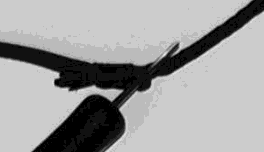
Thread a fid (or thick blunt needle) through the top loop of the rat-tail/fall - visible at the top of the braided knot of the whip.
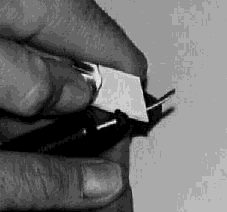
Cut through the rat-tail/fall loop with a sharp knife, being careful not to cut any of the braided knot.
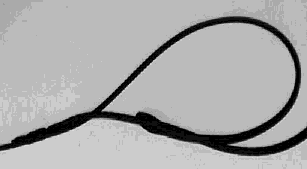
Open up the loop of a new rat-tail/fall and slide it over the old one right up past the braided knot. Pull the old rat-tail/fall down out of the braided knot and feed the thin end of the new one through the braided knot.
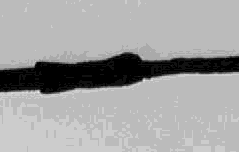
Pull the rat-tail/fall tight and the replacement is complete!

